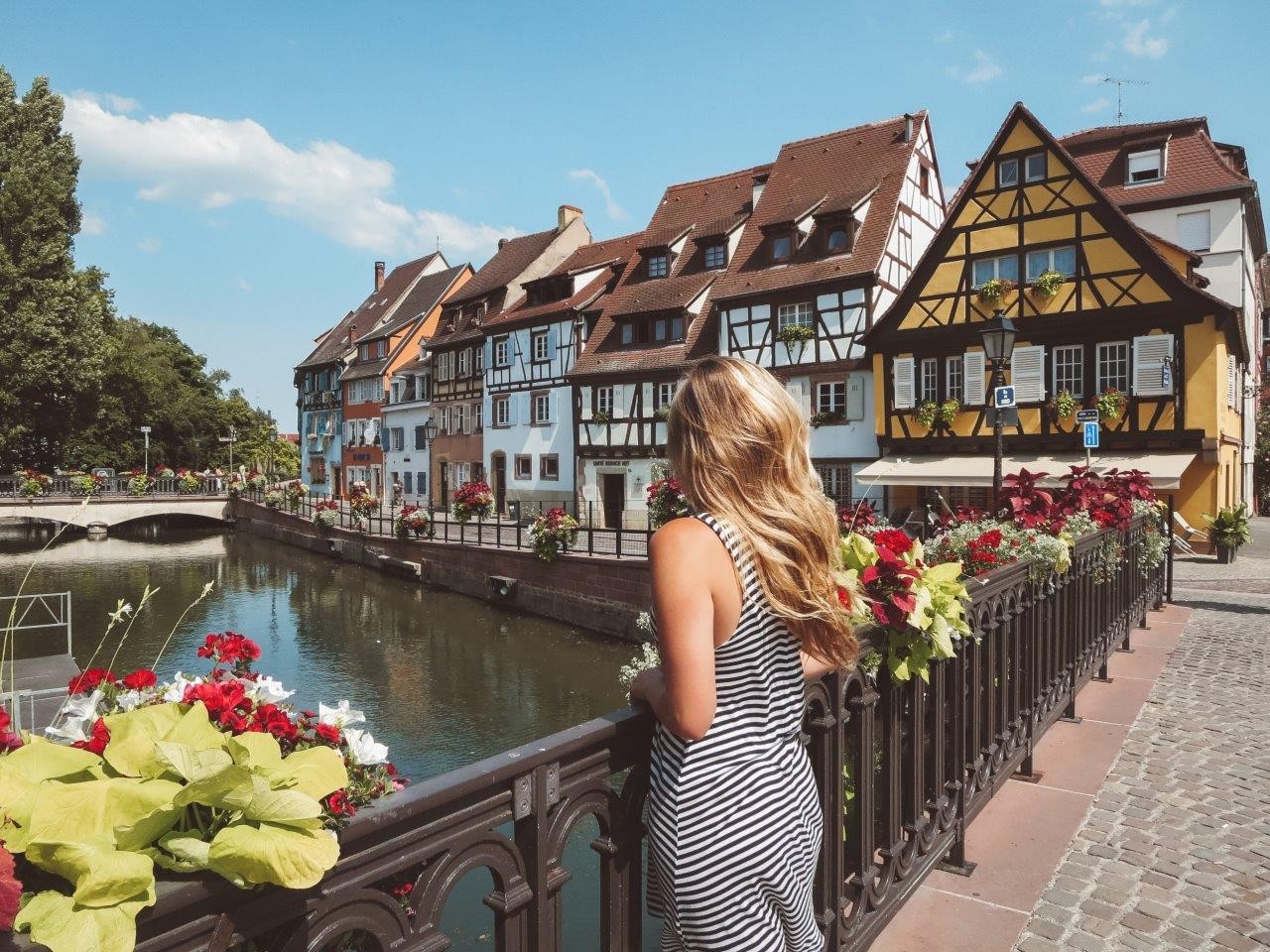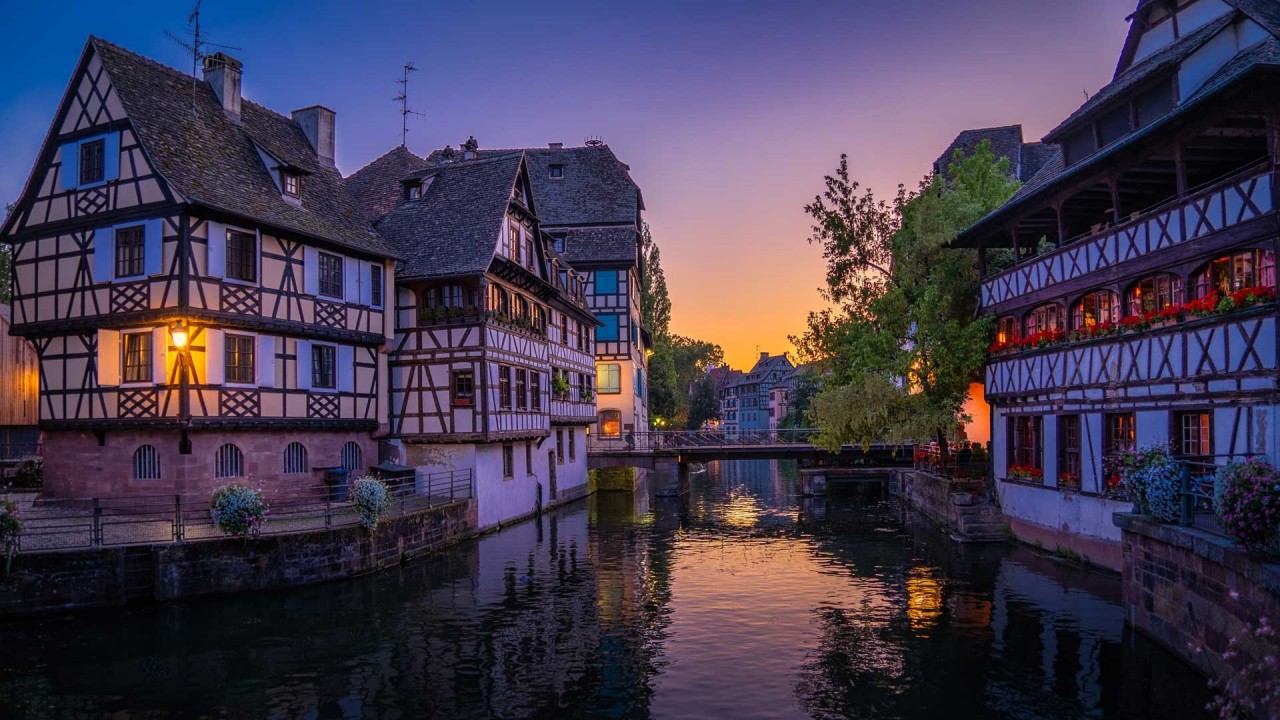‘Tis The Season: Visit Beautiful Strasbourg – “Capital of Christmas”
Strasbourg is the prefecture and largest city of the Grand Est region of eastern France and the official seat of the European Parliament. Located at the border with Germany in the historic region of Alsace, it is the prefecture of the Bas-Rhin department.
In 2018, the city proper had 284,677 inhabitants and both the Eurométropole de Strasbourg (Greater Strasbourg) and the Arrondissement of Strasbourg had 500,510 inhabitants. Strasbourg's metropolitan area had a population of 790,087 in 2017 (not counting the section across the border in Germany), making it the ninth-largest metro area in France and home to 13% of the Grand Est region's inhabitants. The transnational Eurodistrict Strasbourg-Ortenau had a population of 958,421 inhabitants. Strasbourg is one of the de facto four main capitals of the European Union (alongside Brussels, Luxembourg, and Frankfurt), as it is the seat of several European institutions, such as the European Parliament, the Eurocorps, and the European Ombudsman of the European Union. An organization separate from the European Union, the Council of Europe (with its European Court of Human Rights, it's European Directorate for the Quality of Medicines most commonly known in French as "Pharmacopée Européenne", and its European Audiovisual Observatory) is also located in the city.
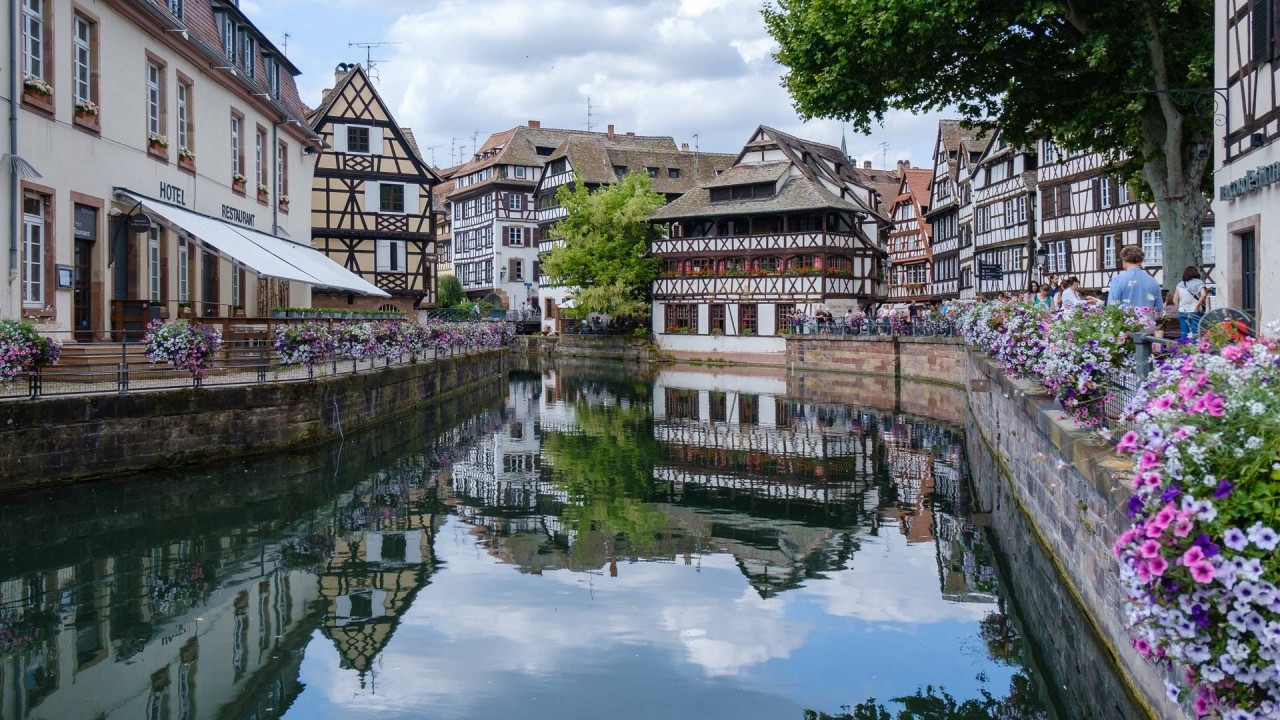 |
| Photo: Travel Dudes |
The history of Strasbourg, France
The city of Strasbourg was formerly one of the most important strongholds of France, not only for the fortifications surrounding the city but also for the “Citadel” that Louis XIV had built here by Vauban (1633-1707) in the late 17th century.
Situated at one of the few points of docking accessible to the Rhine, the location of Strasbourg was originally established because of its geographical location although the first city here actually developed about three kilometres from the river and communicated with the Rhine through two water channels.
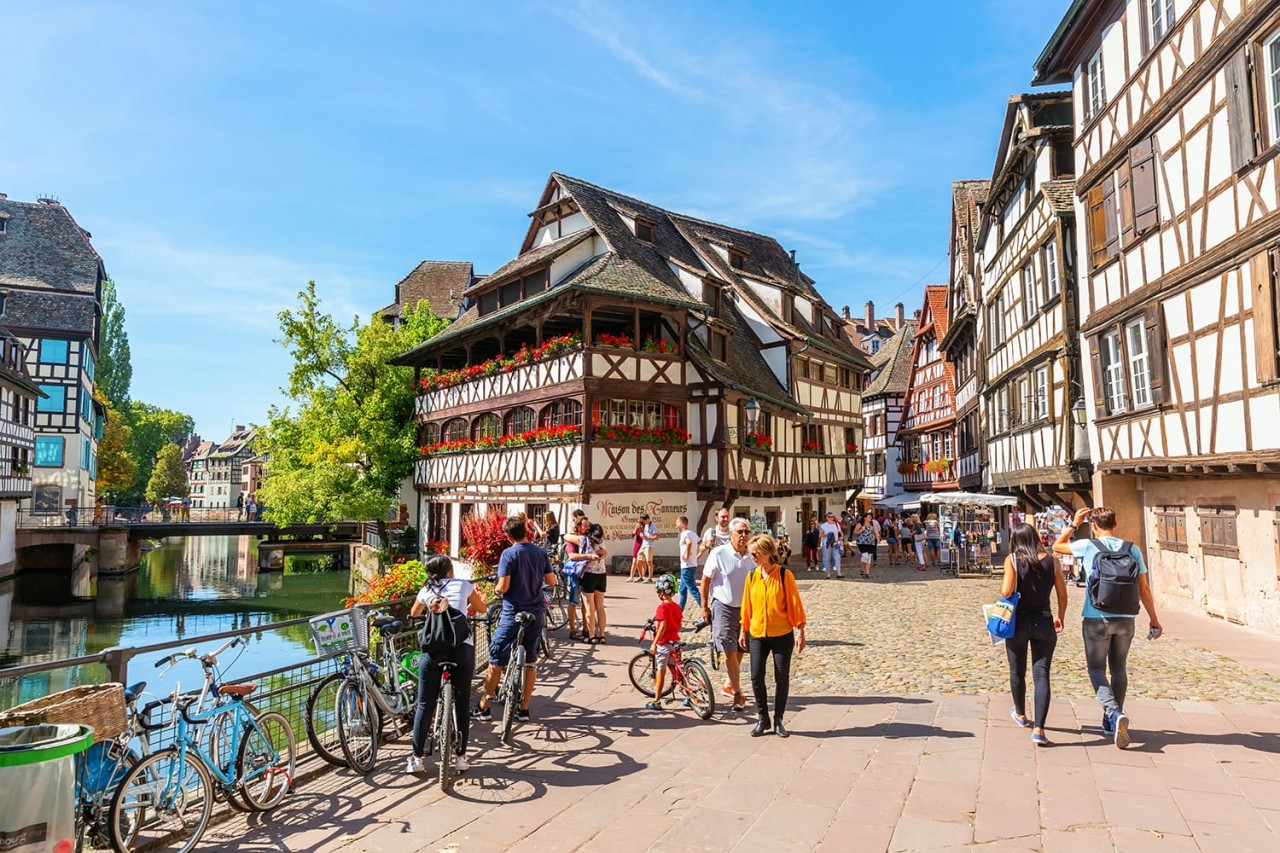 |
| Photo: Road Affair |
After the fall of the Roman Empire, in 496 A.D it came under the domain of the Franks under Clovis. In the sixth century, the town was renamed and it became Strateburg, the 'city of roads' or 'meeting point of many roads', and then 'Strasbur'. Between the sixth and seventh centuries, it became the Duke's of Alsace domain and Episcopal seat, who in practice dominated the city until its transformation into a Municipality.
Over the centuries, Strasbourg became an important place of waterway passage for navigation on the Rhine and a key point for river trade within a radius of ten miles; in fact, Charlemagne, in 775, authorized the city to trade throughout the Empire.
The city was dominated by the Bishop’s power until 1262 when Bishop Walter de Geroldseck was defeated by the bourgeoisie in the battle of Hausbergen. Strasbourg in 1332 became an “Imperial City”, with great autonomy and privileges which were confirmed between 1356 and 1368 by the German Emperor Charles IV (1316-1378), and which were successfully defended in 1429 against a new attempt by Bishop Guillom de Diest to dominate the city.
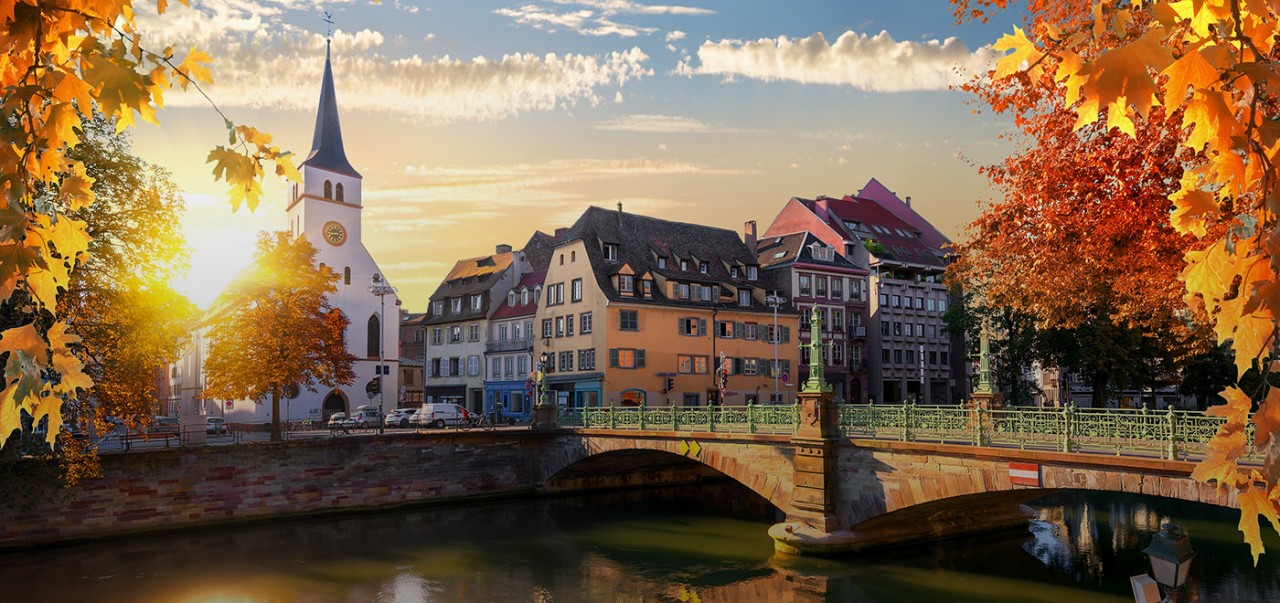 |
| Photo: Turkish Airlines |
The first half of the fifteenth century was very important for Strasbourg; called in that period “Strassburg”, because it was at that time that the cathedral was built (1439), by Jean Hültz, and because the printing press was invented here (1440) by Jean Gutenberg.
Until 1870, its military arsenal was one of the largest in France. The city had eight barracks with possibly 12000 men and 1800 horses; in addition, its reserves of food and ammunition could be used to supply approximately 180,000 men.
Strasbourg today has become once again a central place of politics, the seat of the European Parliament and then the engine of New Europe.
Why was it called “Capital of Christmas”?
If ever there was one place in the world that embodied the spirit of Christmas, it would most definitely be Strasbourg, France. Historically known as the town which held the very first Christmas Market in 1570, making it the oldest market in Europe and is named the “Capital of Christmas!”
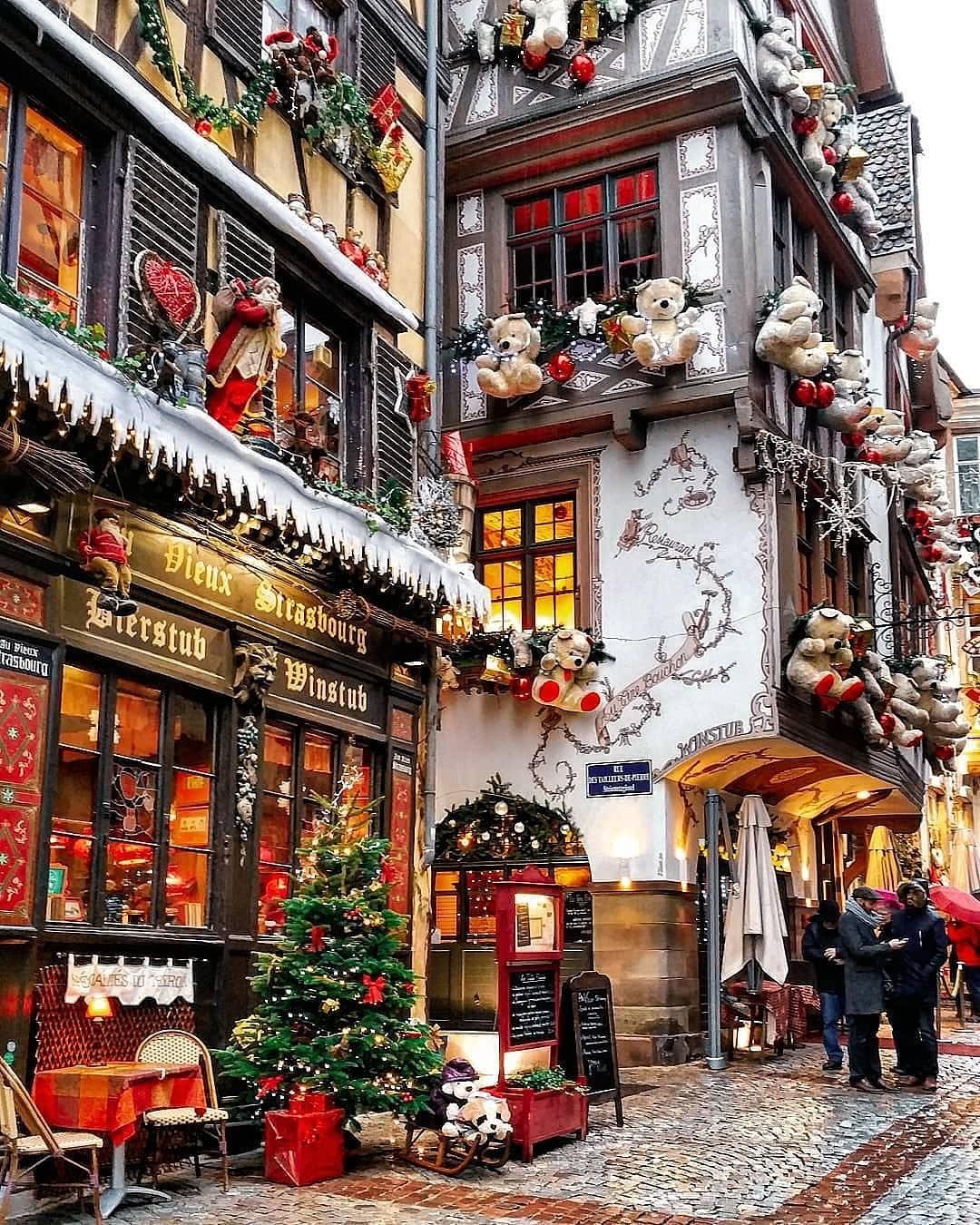 |
| Photo: Pinterest |
Since 1570, Strasbourg’s “Christkindelsmärik” (market of the Infant Jesus) has grown exponentially and today caters to some 2 million visitors every year, with hotels being booked a year in advance and selling out quickly.
The whole city is lit up with festive Christmas lights and half-timbered houses are extravagantly decorated, creating that extra holly jolly Christmas spirit. The smell of sweet mulled wine (here called Vin Chaud) wafts through the air, the mouth-watering smell of warm crepes entice you to be naughty, and off in the distance someone is playing Christmas music on an accordion. It’s without a doubt the most magical part time of year to be in France, according to California Globetrotter.
Christmas market in Strasbourg
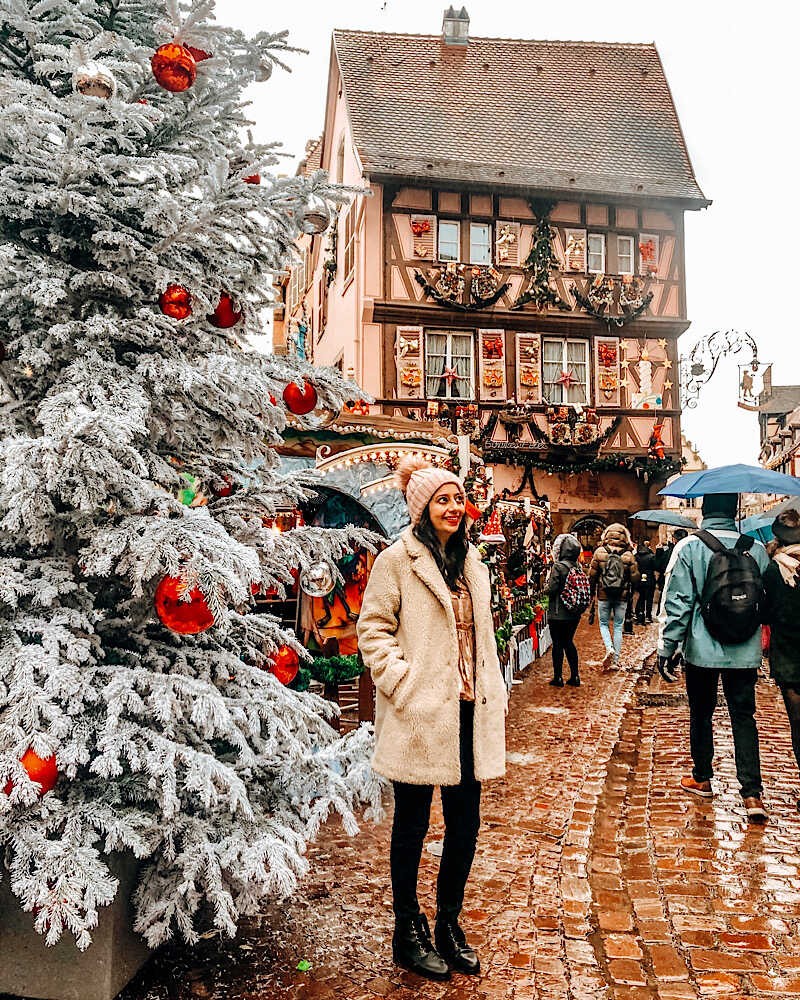 |
| Photo: Jou Jou Travels |
The Christmas market in Strasbourg in France is the oldest market in the country, dating back to 1570 so it’s no surprise that the city considers itself the capital of Christmas.
The Christmas markets in Strasbourg take place every year from the last week in November to the end of December. The town gets taken over by all things Christmassy. Shop windows are transformed into winter wonderlands and the streets are decorated with twinkling lights and festive garlands.
The Christmas markets in Strasbourg spreads out across the centre of the town, focused around Cathedral square and Place Broglie where hundreds of stalls sell ornaments, toys, food, and mulled wine to keep you warm as you browse.
Discover the magic of Christmas in Strasbourg. From London St Pancras Int’l, with a quick change in Paris, the Strasbourg Christmas market is the perfect destination for a bit of Christmas shopping. This year the Strasbourg Christmas market 2021 runs from 26 November to 26 December 2021, so get planning now.
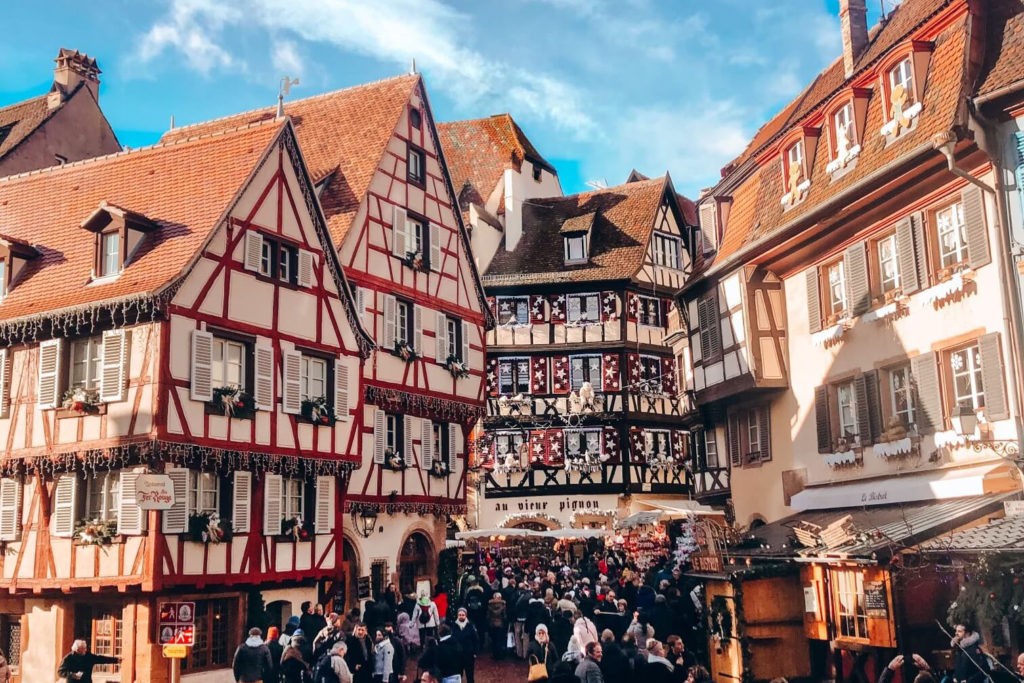 |
| Photo: Jou Jou Travels |
Best attractions in Strasbourg
1. Strasbourg Cathedral
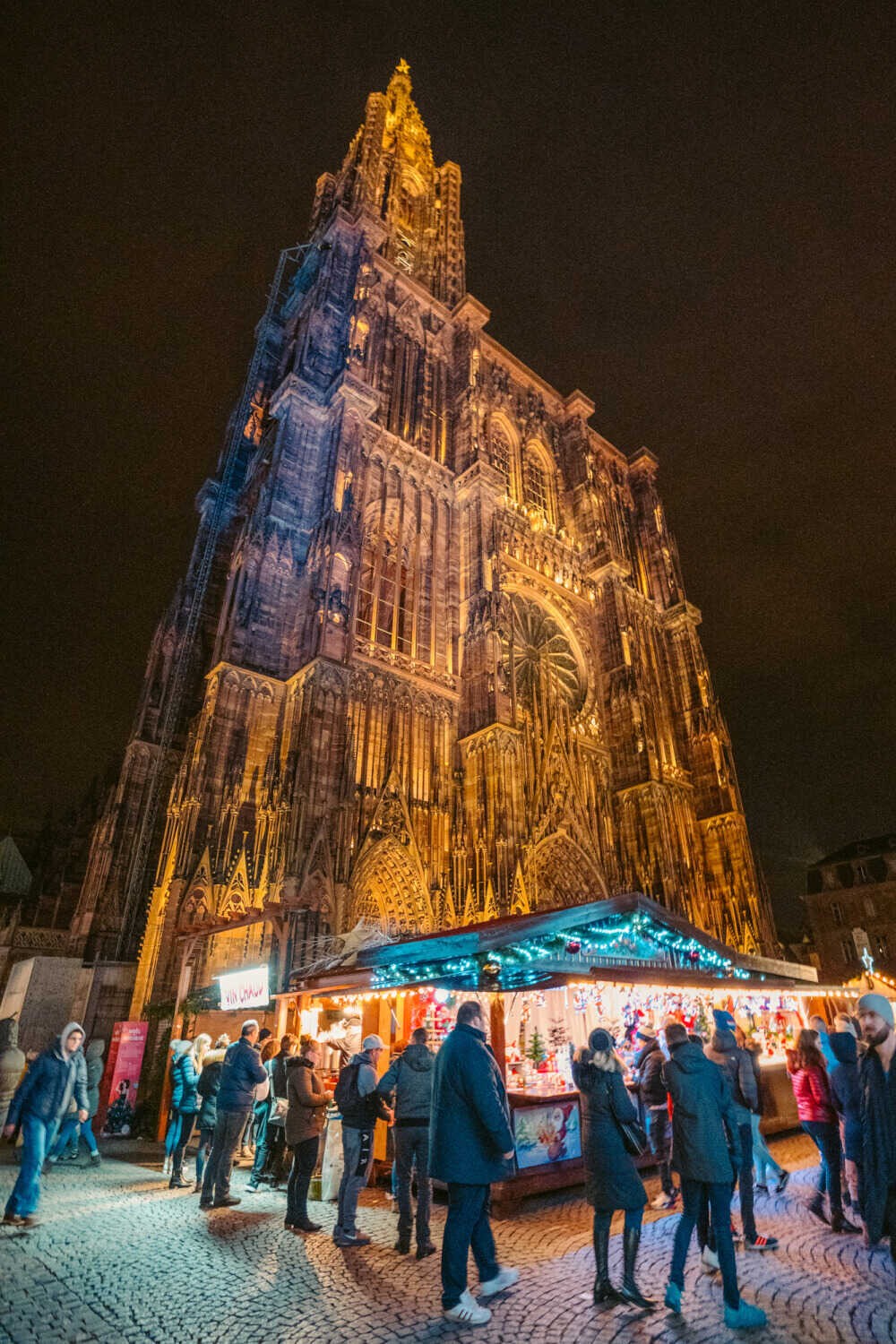 |
| Photo: Happy To Wander |
The Cathédrale de Notre Dame is one of the most astonishing examples of Gothic architecture in the world and features daily parades of the automated figures of its incredible astronomical clock and sweeping views of the city and river from the viewing platform.
"A prodigy of the gigantesque and the delicate," as Victor Hugo claimed. Strasbourg Cathedral (1015-1439) is an absolute masterpiece of Gothic art. The 142 m high spire looks incredibly lightweight and made the Cathedral the highest edifice in all Christianity until the 19th century. Three high spots make the visit unforgettable. Outside, the facade is the greatest "book" of images the Middle Ages has to offer. Hundreds of sculptures stand out from the wall accentuating the effects of shadow and light. The color of the red sandstone changes throughout the day depending on the color of the sky. In the summer evenings, the illuminated scenography is an enchantment. Inside, the long aisle inspires peace and reflection. The 12th- to 14th-century stained-glass windows and the rose window are not to be missed. The monumental organ has a remarkable cabinet decorated with automated figures.
2. European Parliament
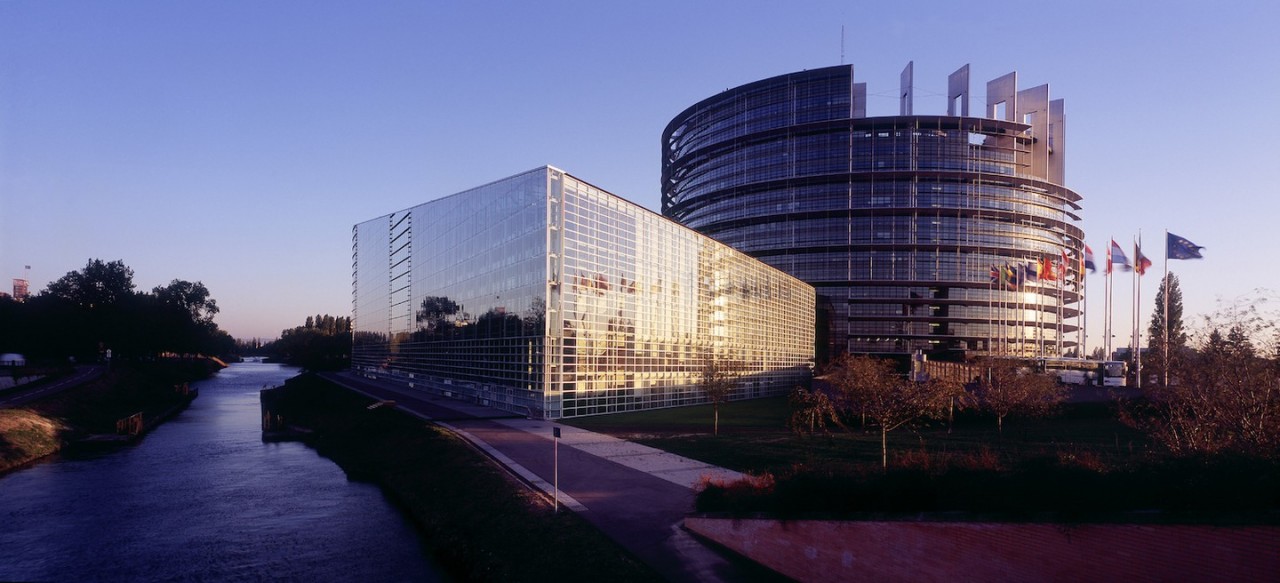 |
| The European Parliament in Strasbourg | © Zvardon / Alsace Tourisme |
Strasbourg is the official seat of the European Parliament, where the Members of Parliament vote and where decisions are taken, and a stunning contemporary building was erected for this purpose on the river Rhine, in the European District. Individual visits to learn about the building and the functioning of the European institution are available only during plenary sessions, but group visits are organized year-round.
The President of the European Parliament (Parliament's speaker) is David Sassoli (PD), elected in July 2019. He presides over a multi-party chamber, the five largest groups being the European People's Party Group (EPP), the Progressive Alliance of Socialists and Democrats (S&D), Renew Europe (previously ALDE), the Greens/European Free Alliance (Greens–EFA) and Identity and Democracy (ID). The last EU-wide election was held in 2019.
The Parliament is headquartered in Strasbourg, France, and has its administrative offices in Luxembourg City. Plenary sessions take place in Strasbourg as well as in Brussels, Belgium, while the Parliament's committee meetings are held primarily in Brussels.
3. Petite France
The best way to visit La Petite France is on foot. This historic quarter of Strasbourg is impossibly picturesque with its half-timbered homes and quaint canals. Some of the roofs have openings to air the attics where leather used to be dried.
Petite France is the city's lively tourist hub, known for cobblestone streets, canals, and well-preserved half-timbered homes like the Tanners’ House, built in 1572. A terrace atop the 17th-century Barrage Vauban, a covered bridge and dam, offers panoramic views. Alsatian eateries dot the area, while shops on and around Grand’Rue sell clothing and souvenirs such as crockery, wine, and specialty teas.
4. Modern and Contemporary Art Museum
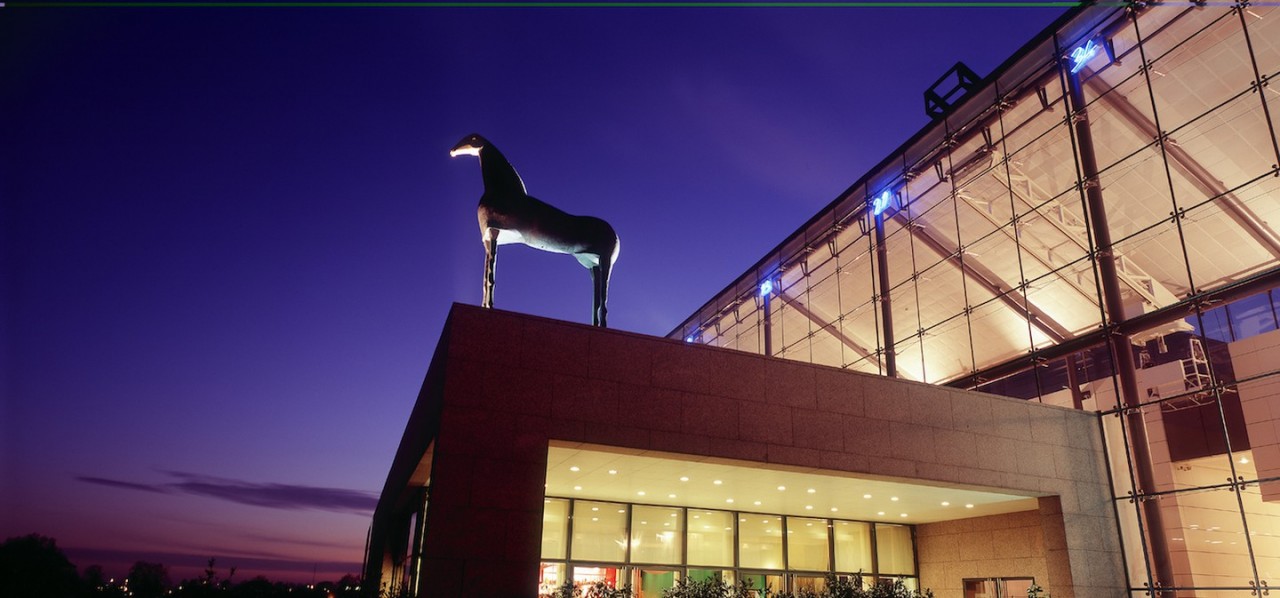 |
| Modern and Contemporary Art Museum in Strasbourg | © CRTA / Zvardon / Tourisme Alsace,com |
The Musée d’Art Moderne et Contemporain de Strasbourg, known as MAMCS to the locals, was inaugurated in 1998 to house the extensive art collection spanning the period from 1879 to our days. The Museum also organizes several well-curated exhibitions each year.
Historically focused on the art of Western Europe and North America, since 2012 Modern and Contemporary Art has greatly expanded and diversified its collections, especially through works by women and artists of color, with particular emphasis on acquisitions from Latin America, South Asia, the Middle East, North Africa, Turkey, and African diasporas. Today, its holdings span a range of media, including paintings, sculpture, works on paper, design, decorative arts, and time-based media. The department presents rotating selections from its dynamic collections in its galleries and special projects throughout the museum.
The department’s robust acquisitions program is complemented by a variety of other activities, including special exhibitions, site-specific commissions by contemporary artists, collaborations within and beyond the museum, collections care through regular maintenance, cataloguing, study, and research initiatives, including the support of fellows and interns.
5. L’Oeuvre Notre-Dame Museum
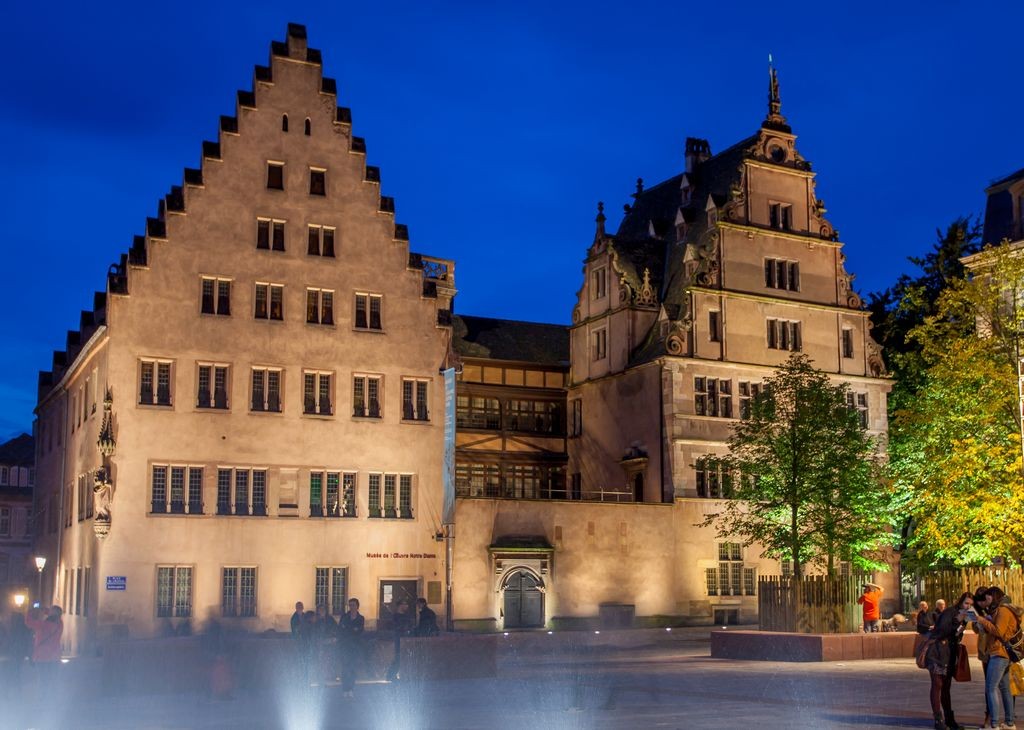 |
| Photo: Visit Alsace |
The Musée de l’Œuvre Notre-Dame houses four invaluable collections of Upper Rhine art until 1681. It is located in the building of the Fondation de l’Œuvre Notre-Dame a foundation that dates back to 1281 and still is responsible to this day for the maintenance and upkeep of the cathedral.
in the new museum of decorative arts of the city, the "Hohenlohe Museum", works of decorative art from the Middle Ages, Renaissance, and Early Baroque were also exhibited. These collections, which had been housed in various locations, were united in 1931 in the newly founded Musée de l’Œuvre Notre-Dame.
In 1956, after the repair of the damage caused by the bombing of Strasbourg during the war in 1944, the museum was re-opened, featuring its expanded collection.
In addition to the cathedral sculptures, glass windows, etc., the collection also features valuable artifacts salvaged from other Strasbourg churches, such as the Temple Neuf, which was destroyed in 1870, the Saint-Pierre-le-Vieux Church, renovated in 1867, and the Église Sainte-Madeleine, destroyed by fire in 1904.
The romanesque components (cloister, baptismal font) from St Trophimus' Church, Eschau and the stained glass windows from St. Peter and St. Paul's Church, Wissembourg, and Mutzig are noteworthy. Included in the collection are many late gothic altars assigned to anonymous masters of the Schongauer School.
6. Historical Museum – Ancienne Grande Boucherie
The Historical Museum, located in the city’s former slaughterhouse, tells the story of the city from the Middle Ages to the French Revolution. In addition to experiencing the memory of great events and historical figures, visitors can retrace the day-to-day life of ordinary citizens through the collection of costumes, furniture, and domestic objects.
 | Best Christmas TV To Watch In 2021 Christmas is just around the corner, and there also come the best Christmas TV specials that promise to bring you the best and most entertaining ... |
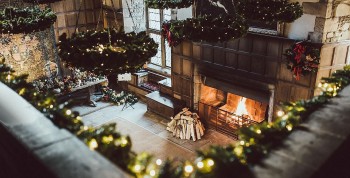 | 12 Charming Towns in the UK for Your Ideal Christmas Family Trip This year, check out these 12 locations for fun and memorable Christmas trip with your family. Let’s find out what make these places so special ... |
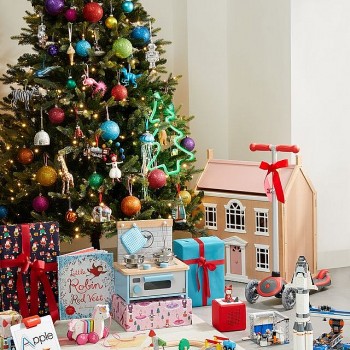 | Top 10 Christmas Toys For 2021 Top 10 Christmas toys for 2021 according to industry experts |
Recommended
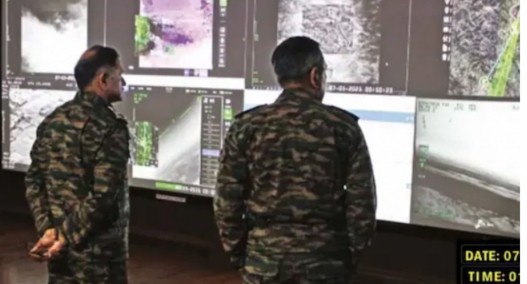 World
World
India reports 9 Pakistani Aircraft Destroyed In Operation Sindoor Strikes
 World
World
Thailand Positions Itself As a Global Wellness Destination
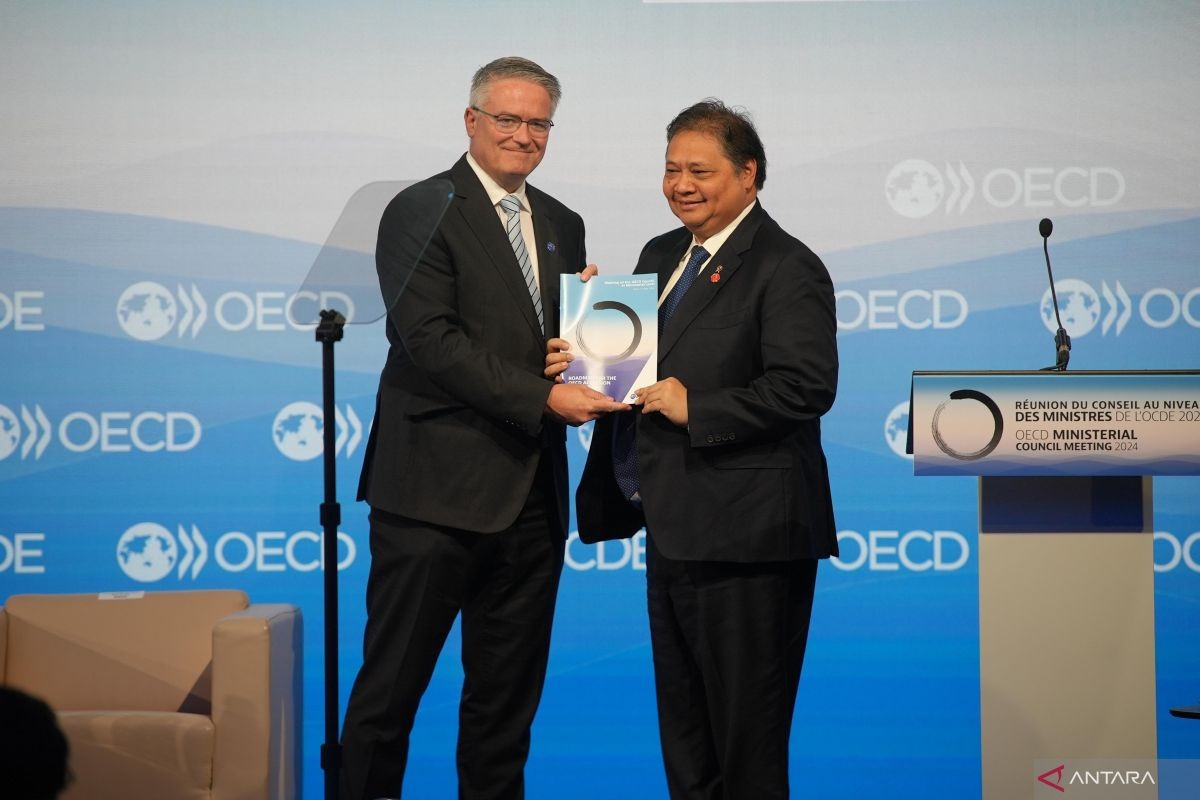 World
World
Indonesia Accelerates Procedures to Join OECD
 World
World
South Korea elects Lee Jae-myung president
Popular article
 World
World
22nd Shangri-La Dialogue: Japan, Philippines boost defence cooperation
 World
World
Pakistan NCRC report explores emerging child rights issues
 World
World
"India has right to defend herself against terror," says German Foreign Minister, endorses Op Sindoor
 World
World




